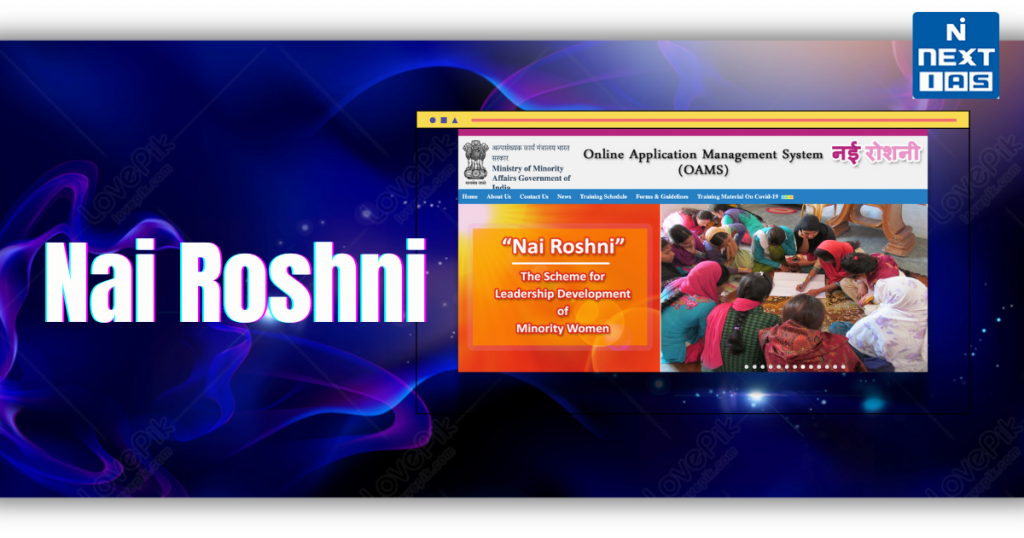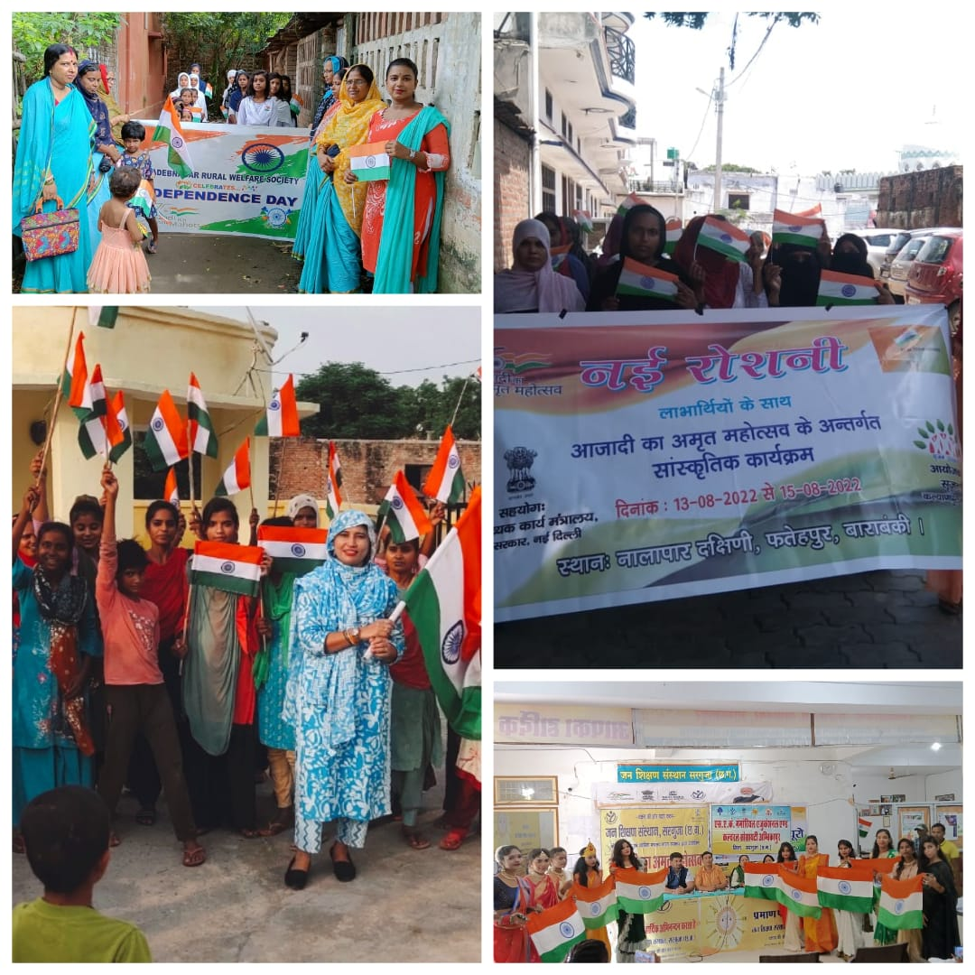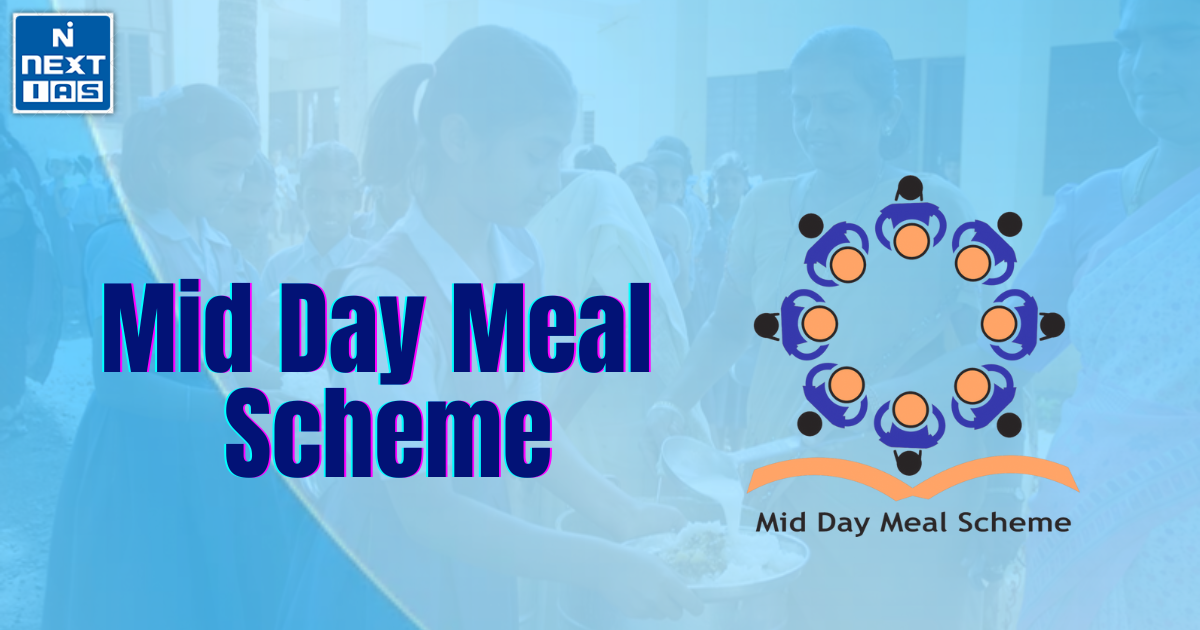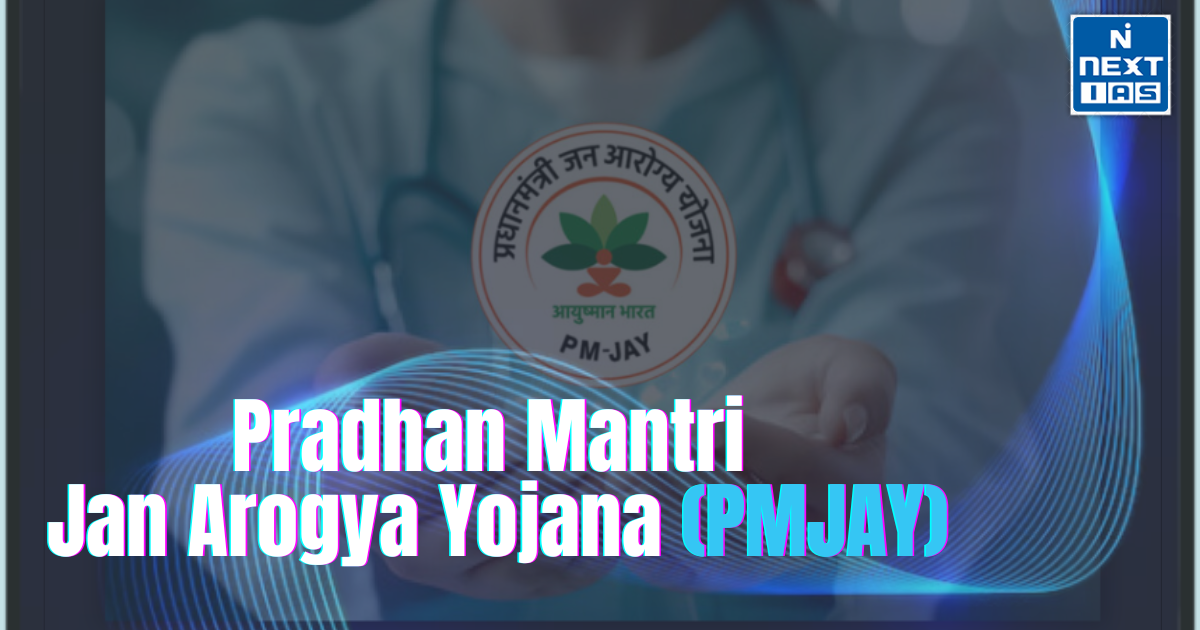
Nai Roshni is a Government of India scheme under the Ministry of Minority Affairs, aimed at empowering and developing leadership skills among minority women. Launched in 2012, it provides training on health, education, financial literacy, and legal rights, fostering confidence and self-reliance in participants to improve their socio-economic status.
About the Nai Roshni
- Nai Roshni is a flagship scheme launched in 2012 by the Ministry of Minority Affairs, Government of India, to empower minority women by enhancing their leadership and life skills.
- It focuses on instilling confidence, promoting self-reliance, and encouraging active participation in social, economic, and community activities.
- The scheme offers training programs covering a wide range of topics, including health and hygiene, financial literacy, education, digital skills, women’s rights, and legal awareness.
- Targeted at women from economically weaker sections of notified minority communities, Nai Roshni equips them to become change agents within their families and communities.
- The training is implemented through NGOs, Civil Society Organizations (CSOs), and other institutions at the grassroots level, ensuring outreach to remote areas.
- By addressing critical social and developmental issues, the program aims to improve the overall quality of life for minority women, fostering inclusion and contributing to national growth.

Features of Nai Roshni
The Nai Roshni scheme is designed to empower minority women through leadership development and skill-building initiatives. Its key features include:
- Target Group: Focuses on minority women from economically weaker sections, aged between 18-65 years.
- Training Areas: Covers diverse topics such as health and hygiene, financial literacy, digital skills, legal rights, women’s empowerment, and education.
- Implementation: Conducted through NGOs, Civil Society Organizations (CSOs), and other grassroots organizations to ensure effective outreach.
- Community Leadership: Aims to develop leadership skills, enabling women to act as catalysts of change in their families and communities.
- Inclusivity: Promotes participation from remote and underprivileged areas, fostering socio-economic development at the grassroots level.
- Duration: Typically, training programs last six days, depending on the module.
- Capacity Building: Encourages minority women to address community challenges, access government schemes, and lead in decision-making processes.
The program strengthens their confidence and enhances their socio-economic standing.
Objective of Nai Roshni
The objective of Nai Roshni is to empower and enhance the socio-economic status of minority women by developing their leadership skills and fostering self-reliance. The scheme aims to:
- Promote Awareness: Educate women about health, hygiene, financial management, legal rights, and government welfare schemes.
- Encourage Leadership: Enable women to become active leaders and change agents within their families and communities.
- Enhance Socio-Economic Participation: Boost women’s involvement in economic activities, education, and community decision-making.
- Foster Confidence: Build self-confidence to help them overcome social and economic challenges.
- Facilitate Inclusion: Integrate minority women into mainstream development processes for holistic national growth.
Through structured training and capacity-building initiatives, Nai Roshni seeks to create a supportive environment where minority women can thrive and contribute meaningfully to society.
Significance of Nai Roshni
The Nai Roshni scheme holds significant importance in empowering minority women and fostering inclusive development. Its key significance includes:
- Women’s Empowerment: It equips minority women with knowledge, skills, and confidence to become independent and assertive in their personal and professional lives.
- Social Inclusion: By addressing the socio-economic challenges faced by minority women, the scheme promotes their integration into mainstream society.
- Leadership Development: The program helps women become change agents, inspiring others and contributing to community growth.
- Improved Awareness: Training on financial literacy, health, legal rights, and digital skills ensures that women can make informed decisions for themselves and their families.
- Community Development: Empowered women contribute to the betterment of their families and communities, creating a ripple effect of positive change.
- National Growth: By improving the socio-economic participation of minority women, the scheme enhances their contribution to the country’s overall development and progress.
Lacunae of Nai Roshni
Despite its positive intent and impact, the Nai Roshni scheme has certain lacunae that affect its effectiveness. Key challenges include:
- Limited Outreach: The scheme’s implementation is often confined to specific regions, leaving many eligible minority women in remote and underserved areas unaware or unreached.
- Inadequate Monitoring: Weak monitoring and evaluation mechanisms hinder the assessment of the scheme’s effectiveness and the impact of training programs.
- Lack of Follow-up: There is insufficient follow-up to track the long-term progress of women after completing the training, limiting sustained outcomes.
- Dependence on NGOs: Heavy reliance on NGOs and Civil Society Organizations (CSOs) for implementation sometimes leads to variations in the quality and coverage of the training programs.
- Insufficient Budget Allocation: Limited financial resources restrict the scalability and reach of the scheme, preventing it from benefiting a larger population.
- Low Awareness: A lack of widespread awareness campaigns results in fewer women from minority communities participating in the program.
Addressing these gaps can enhance the scheme’s efficiency and its impact on empowering minority women.
Key Pointers on Nai Roshni for UPSC CSE Prelims
- Scheme Name: Nai Roshni – Leadership Development Program for Minority Women.
- Launched by: Ministry of Minority Affairs, Government of India, in 2012.
- Objective: Empower minority women by developing leadership skills, fostering self-reliance, and promoting social and economic participation.
- Target Group: Minority women aged 18-65 years from economically weaker sections.
- Training Modules: Covers health and hygiene, financial literacy, digital skills, women’s rights, education, and legal awareness.
- Implementation: Conducted through NGOs, Civil Society Organizations (CSOs), and institutions at the grassroots level.
- Duration: Training programs usually last 6 days.
- Focus Areas: Empowerment, social inclusion, and capacity building for leadership roles within families and communities.
- Significance: Encourages minority women to become agents of change and contribute to community and national development.
- Challenges: Limited outreach, inadequate monitoring, and low awareness among eligible beneficiaries.
These points offer concise insights relevant for the prelims examination.
Way Forward
To enhance Nai Roshni, focus on expanding outreach to remote areas, strengthening monitoring mechanisms, and ensuring sustained follow-up with beneficiaries. Increase budget allocation, partner with local stakeholders for effective implementation, and run awareness campaigns to maximize participation. Leveraging digital platforms can further amplify the scheme’s reach and impact.
Conclusion
Nai Roshni is a transformative initiative empowering minority women with knowledge, confidence, and leadership skills to improve their socio-economic status. By fostering inclusivity and self-reliance, it helps create a ripple effect of positive change within families and communities, contributing significantly to the nation’s overall development and social equity.





